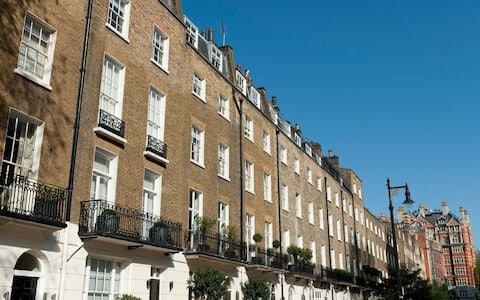By Liz Rowlinson
NEVER has there been so much speculation about the construction of a block of flats as that surrounding One Hyde Park, London’s most expensive apartment complex.
And as the block rises opposite Harvey Nichols in Knightsbridge, it is impossible not to imagine what a flat costing £80 million to £100 million will look like.
What we do know is that the penthouses are designed by Richard Rogers and will come with top range security (panic rooms and bulletproof windows), high-class services (supplied by the Mandarin Oriental hotel) as well as a prime location.
It’s easy to wonder — in the week when Nationwide Building Society announced that house prices are falling at the fastest rate since the last recession — how the troubled market is affecting such a lavish project, especially when new-build flats have been the hardest hit.
Well, One Hyde Park — where 40 of the 80 units have been sold, with average prices of more than £20 million — presents itself as proof that the top of the market is still going strong.
The international moneyed oligarchy (a third of buyers come from Russia, a quarter from the Middle East) have raised London’s status as a capital of the super-rich, with the most billionaires in Europe.
Looking at the wider super-prime London market, latest figures released by Savills show that while properties in the £5million bracket have ‘flattened’, those worth £10million plus have actually increased by 1.2 per cent.
‘We’ve had 16 sales
in June alone from £5.3 million to £70 million,’ says Jonathan Hewlett, director of Savills, which is selling fourbed apartments at a prestigious new development, 21 Chesham Place in Belgravia, for £15.9 miliion to £40 million.
Other addresses attracting interest from the super-rich include The Knightsbridge (a luxury development near One Hyde Park) Lennox Gardens and Cadogan Square.
Last month, Palace Green, a fourstorey house in Kensington, sold for a world-record-breaking £117 million to steel magnate Lakshmi Mittal. Britain’s richest man — worth a reported £50 billion — is unlikely to be affected by interest rates on highstreet mortgages, neither will the 20 people looking for properties of between £20 million to £100 million on the books of Aylesford, the company who handled the Mittal sale. ‘The demographics of London haven’t changed in the past six months. There wasn’t a big exodus of non-doms, so there are still no sellers and too many buyers,’ says Aylesford’s chairman, Andrew Langton.
His comments are echoed by Camilla Dell of Black Brick, a property-finding agency whose average sale has shot up from £2 million to £6 million this year.
‘Prices are being driven up in the £10million-plus bracket because of the shortage but also because sellers at that level never need to sell if they don’t get the right price,’ she says.
Outside London, the market is equally active and — according to Mark Lawson of The Buying Solution, which sources estates for the super-rich — there can be a feeding frenzy for the right property.
‘A country estate — a good-looking Georgian country house, in plenty of countryside, near a nice village — is a stronger aspiration for the selfmade man than it was five years ago,’ he says.
Perfect for such a man might be an 11-bed ‘Palladian style’ mansion near Stratford upon Avon, on sale for almost £11million through Quintessentially Estates. This comes with 35 acres, four-car garage, ballroom and ‘Versace-inspired’ decor.

By Isabelle Fraser